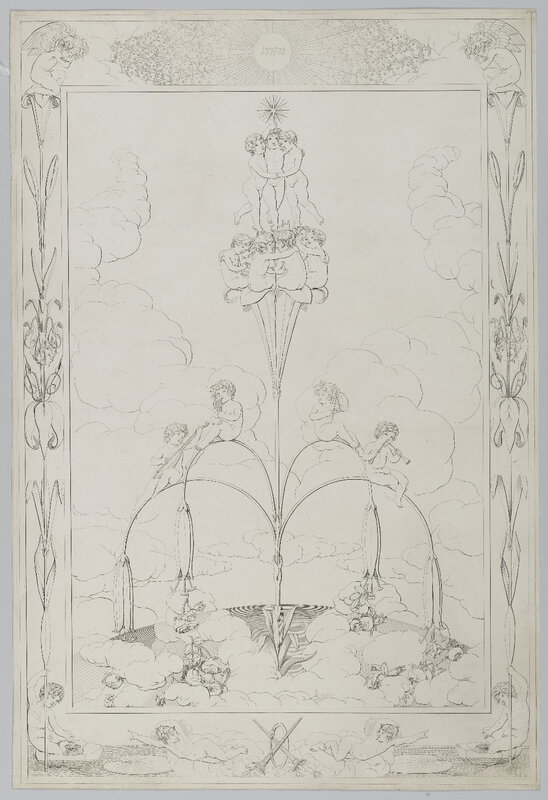Brooklyn Museum
June 21 – October 13, 2019
Showcasing the breadth of the Brooklyn Museum’s exceptional works on paper collection, Rembrandt to Picasso: Five Centuries of European Works on Paper highlights more than one hundred European prints and drawings, pairing masterworks by renowned artists such as William Blake, Albrecht Dürer, Francisco Goya, and Vincent van Gogh with lesser known, rarely seen drawings, prints, and watercolors. Works on view feature intimate portraits, biting social satire, fantastical visions, vivid landscapes, and more, and are organized into four broad chronological sections spanning the early sixteenth through the early twentieth centuries.
Rembrandt to Picasso: Five Centuries of European Works on Paper is curated by Lisa Small, Senior Curator, European Art, Brooklyn Museum, and is on view from June 21 through October 13, 2019. “There is an intimacy and immediacy to works on paper that seems to bring us nearest to an artist’s vision and process,” explains Lisa Small. “I’m thrilled for our audiences to have close - looking encounters with these highlights from Brooklyn’s extens ive collection of European works on paper, which are rarely exhibited because of light - sensitivity. These prints and drawings are examples of extraordinary technical achievement and vivid artistic experimentation, but they also offer an opportunity to expl ore compelling and provocative themes that continue to resonate today.”
The exhibition begins by exploring the rise of paper and print culture in the sixteenth and seventeenth centuries. With paper’s increased availability and the advent of printed images — first through woodcuts and engravings, then etchings — it became possible to create multiple images that could be widely circulated and consumed. This gave rise to an expanded market for works on paper and expressive possibilities for artists like Albrecht Dürer, whose technical skill and dramatic manipulation of the medium elevated printmaking to an independent art form.
A series of works by Dürer, including a large - scale, eight - part woodcut print, are on view in this section, alongside works by Rembrandt v an Rijn and Wenceslaus Hollar.
The second section highlights the work of artists who were active during the Enlightenment, an era that embraced intellectual and social reforms over tradition and superstition. Artists in the eighteenth century used print making to offer commentary on the world around them. Two prints by British artist William Hogarth are on view in this section: Gin Lane and Beer Street , both from 1751. Hogarth’s widely distributed satirical engravings memorialized the grim realities of Lon don’s urban poor, and became part of the impetus for reform efforts.
At the turn of the century, artists like Francisco Goya and William Blake began to question Enlightenment ideas of reason and rationalism and instead embraced the subjectivity and emotion of Romanticism, the first major artistic movement of the modern age.
A number of highlights from the Brooklyn Museum’s collection are included here, including
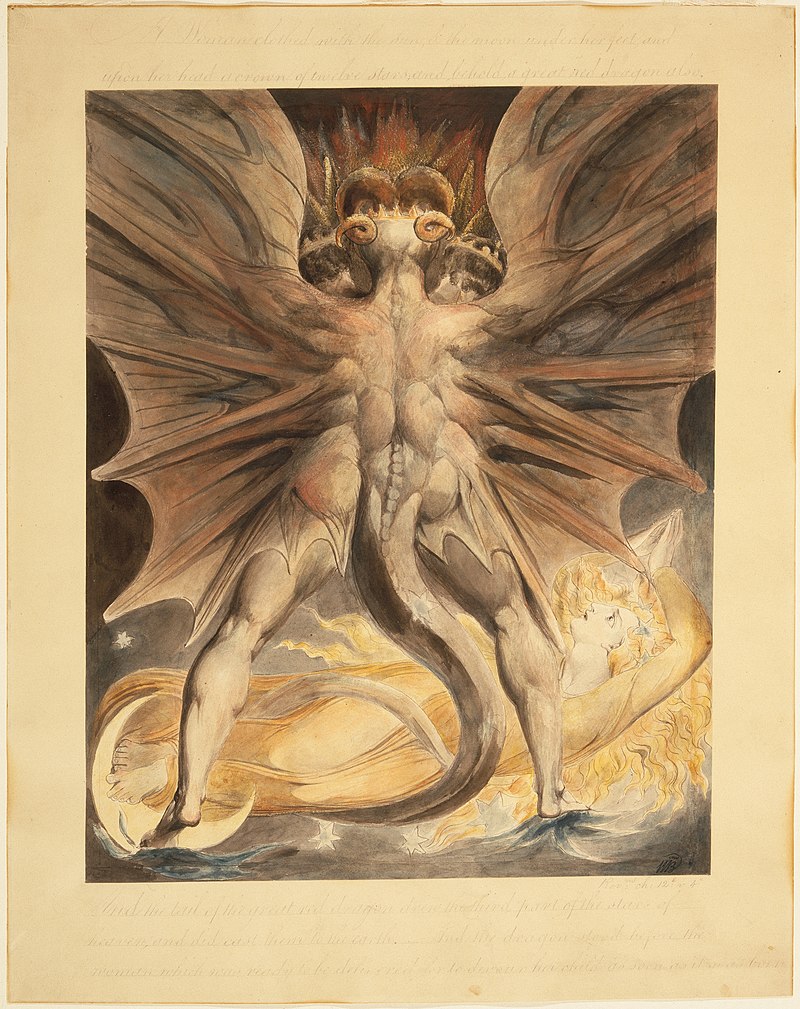
Blake’s The Great Red Dragon and the WomanClothed with the Sun (1803 – 5), a group of etchings from one of Francisco Goya’s most acclaimed series, Los Caprichos (The Caprices) (1797 – 98),
Philipp Otto Runge (German, 1777-1810). Morning (Der Morgen), 1803-1805. Etching on wove paper, Sheet: 28 1/4 x 19 in. (71.8 x 48.3 cm). Brooklyn Museum, Museum Collection Fund, 38.623.
Philipp Otto Runge (German, 1777-1810). Day (Der Tag),
1803-1805. Black ink etching on moderately thick, slightly textured
wove paper, Sheet: 28 3/8 x 18 15/16 in. (72.1 x 48.1 cm). Brooklyn
Museum, Museum Collection Fund, 38.6
and two etchings from Philipp Otto Runge’s rare cycle Times of Day (1803 – 5), which expressed the harmony of the universe through symbolism and allegory.
The exhibition’s final two sections explore the ways in which technical innovations and modern aesthetic movements shaped artists’ work. The late eighteenth century saw the invention of lithography, which allowed artists like Eugène Delacroix, Honoré Daumier, and Théodore Géricault to immediately capture their own drawings in a range of tones and textures.
Later, a revival of the more painterly, stylistic use of etchings encouraged artists such as Camille Corot, Édouard Manet, Berthe Morisot, and Edgar Degas to use the medium, as well as graphite, watercolor, and pastel, as a vehicle for compositional and technical experimentation.
Delicate works in color appear in this section, including Édouard Manet’s The Equestrienne (L'Amazone) (1875 – 76) and Woman Drying Her Hair (Femme s'essuyant les cheveux) (1889), by Edgar Degas.
Works on view by Vincent van Gogh, Paul Gauguin, and Paul Cézanne from the late nineteenth century demonstrate a shift from naturalism to a more gestural, expressive aesthetic.
By the early and mid - twentieth century, and shaped by the trauma of a world war, artists like Vasily Kandinsky, Erich Heckel, and Käthe Kollwitz fully embraced this new style of Expressionism and exhibit a more graphic vocabulary of angular, distorted forms to commun cate meaning.
A number of geometric abstract lithographs by El Lissitzky from the series Victory Over the Sun (1923) demonstrate the period’s tensions between pure abstraction and representation. European artists were also influenced by encounters with the artistic style and peoples of Africa and the South Pacific.
Paul Gauguin’s Tahitian Woman (1894) and Emil Nolde’s South Sea (1915) are on view, along with Karl Schmidt - Rottluff’s woodcut of a kneeling woman and Pablo Picasso’s Nude Standing in Profile (1906), an early example of how ancient Iberian art influenced his work.

Vasily Kandinsky (Russian, 1866–1944). Small Worlds VII, 1922. Color lithograph on wove paper, 10 5/8 x 9 3/16 in. (27 x 23.3 cm). Brooklyn Museum, Gift of Stephen Currier, 58.108.11. © 2019 Artists Rights Society (ARS), New York.
Pablo
Picasso, (Spanish, 1881–1973). Minotauromachy (La Minotauromachie),
1935. Etching, scraper, and burin on laid paper, Sheet: 19 1/2 x 27 ¼
in. (49.5 x 69.2 cm), Image: 27 x 19 5/8 in. (68.6 x 49.8 cm). Brooklyn
Museum, Frank L. Babbott Fund, Frederick Loeser Fund, and Museum
Collection Fund, 59.30. © 2019 Estate of Pablo Picasso / Artists Rights
Society (ARS), New York. 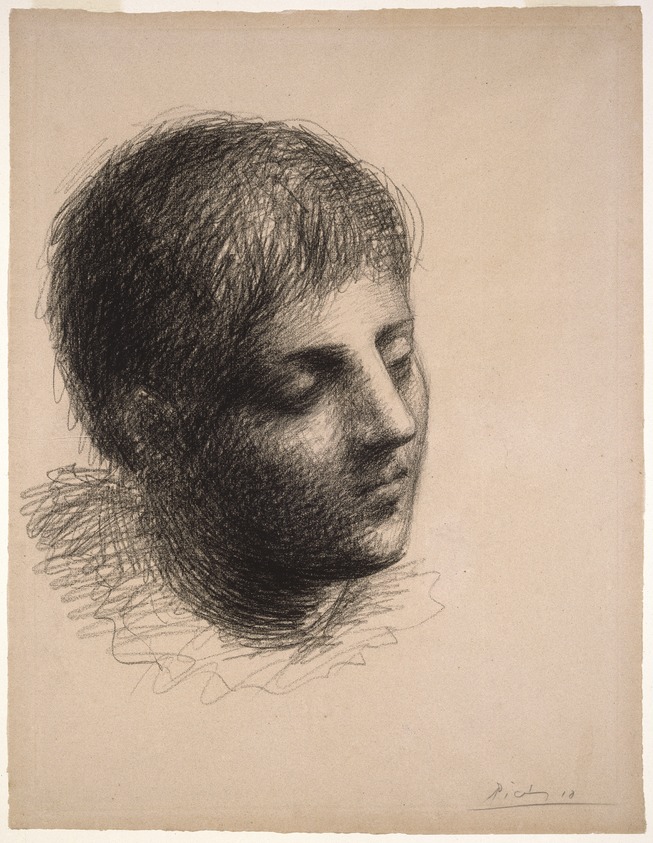 Pablo Picasso (Spanish, 1881–1973). Head of a Young Man (Tête de jeune homme), 1923. Grease crayon on pink Michallet laid paper, 24 ½ x 18 ⅝ in. (62.2 x 47.3 cm). Brooklyn Museum, Carll H. de Silver Fund, 39.18. © 2018 Estate of Pablo Picasso / Artists Rights Society (ARS), New York
Pablo Picasso (Spanish, 1881–1973). Head of a Young Man (Tête de jeune homme), 1923. Grease crayon on pink Michallet laid paper, 24 ½ x 18 ⅝ in. (62.2 x 47.3 cm). Brooklyn Museum, Carll H. de Silver Fund, 39.18. © 2018 Estate of Pablo Picasso / Artists Rights Society (ARS), New York  Pablo Picasso, (Spanish, 1881–1973). Nude Standing in Profile (Nu debout en profil), 1906. Charcoal on laid paper, 21 1/8 x 14 1/4 in. (53.7 x 36.2 cm). Brooklyn Museum, Gift of Arthur Wiesenberger, 43.178. © 2019 Estate of Pablo Picasso / Artists Rights Society (ARS), New York
Pablo Picasso, (Spanish, 1881–1973). Nude Standing in Profile (Nu debout en profil), 1906. Charcoal on laid paper, 21 1/8 x 14 1/4 in. (53.7 x 36.2 cm). Brooklyn Museum, Gift of Arthur Wiesenberger, 43.178. © 2019 Estate of Pablo Picasso / Artists Rights Society (ARS), New York 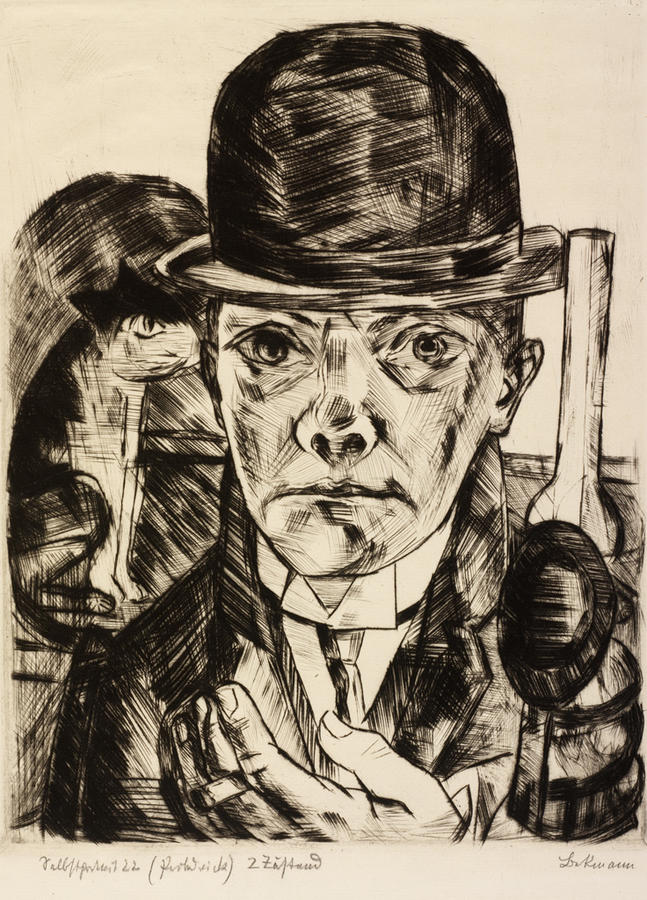 Max Beckmann (German, 1884–1950). Self-Portrait in Bowler Hat, 1921. Drypoint on laid paper, 12 1/2 x 9 7/16 in. (31.8 x 24 cm).
Max Beckmann (German, 1884–1950). Self-Portrait in Bowler Hat, 1921. Drypoint on laid paper, 12 1/2 x 9 7/16 in. (31.8 x 24 cm).  Pierre Bonnard (French, 1867–1947). The Little Laundry Girl, 1895–96. Color lithograph on wove paper, 11 7/16 x 7 7/8 in. (29.1 x 20 cm). Brooklyn Museum, by exchange, 38.444. © 2019 Artists Rights Society (ARS), New York
Pierre Bonnard (French, 1867–1947). The Little Laundry Girl, 1895–96. Color lithograph on wove paper, 11 7/16 x 7 7/8 in. (29.1 x 20 cm). Brooklyn Museum, by exchange, 38.444. © 2019 Artists Rights Society (ARS), New York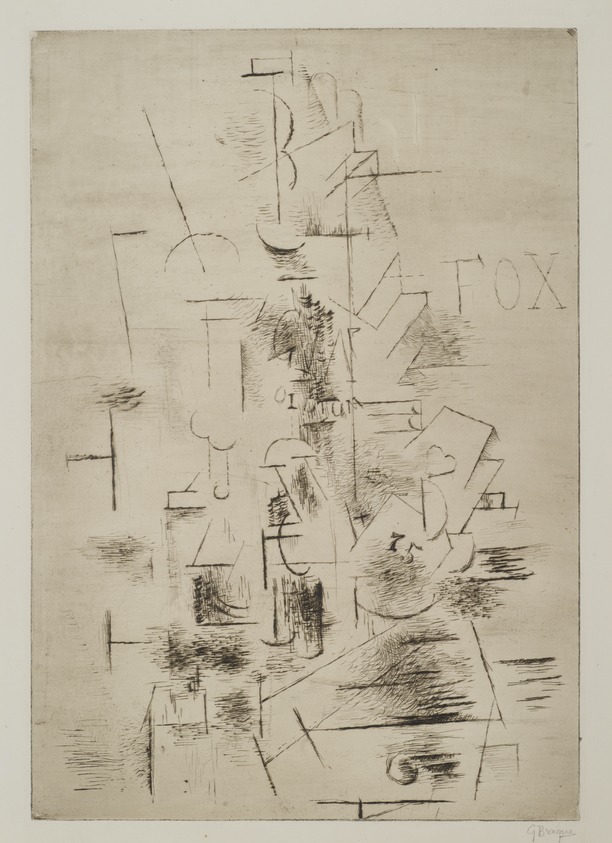
Georges Braque (French, 1882–1963). Fox, 1911. Etching and drypoint on Arches laid paper, Image: 21 1/2 x 14 7/8 in. (54.6 x 37.8 cm). Brooklyn Museum, A. Augustus Healy Fund, 36.59. © 2019 Artists Rights Society (ARS), New York / ADAGP, Paris

Otto Dix (German, 1891–1969). Card Players, 1920. Drypoint on wove paper, 12 7/8 × 11 1/8 in. (32.7 × 28.3 cm). Brooklyn Museum, Gift of Dr. F. H. Hirschland, 55.165.66. © 2019 Artists Rights Society (ARS), New York / VG Bild-Kunst,
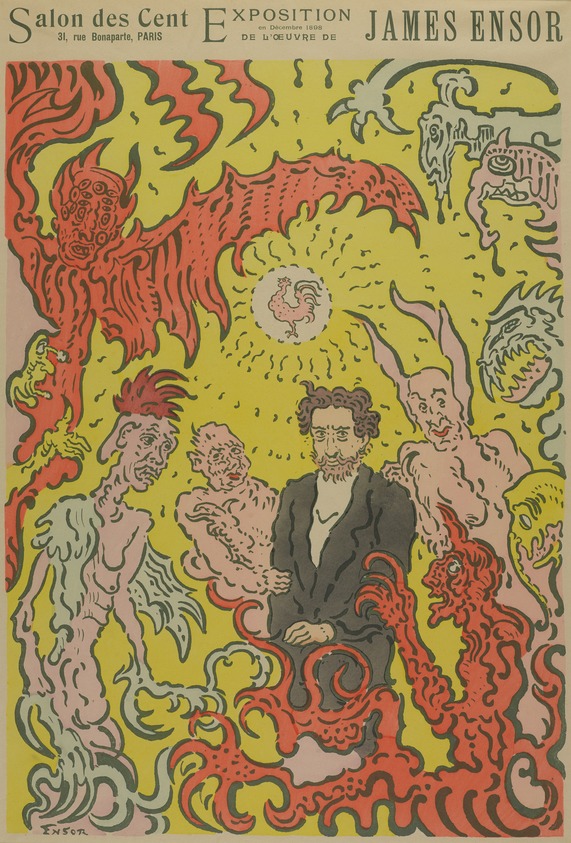 James Ensor (Belgian, 1860–1949). Salon des Cent, 1898. Color lithograph on wove paper, Image: 22 1/4 × 14 1/2 in. (56.5 × 36.8 cm). Brooklyn Museum, by exchange, 38.432.
James Ensor (Belgian, 1860–1949). Salon des Cent, 1898. Color lithograph on wove paper, Image: 22 1/4 × 14 1/2 in. (56.5 × 36.8 cm). Brooklyn Museum, by exchange, 38.432.
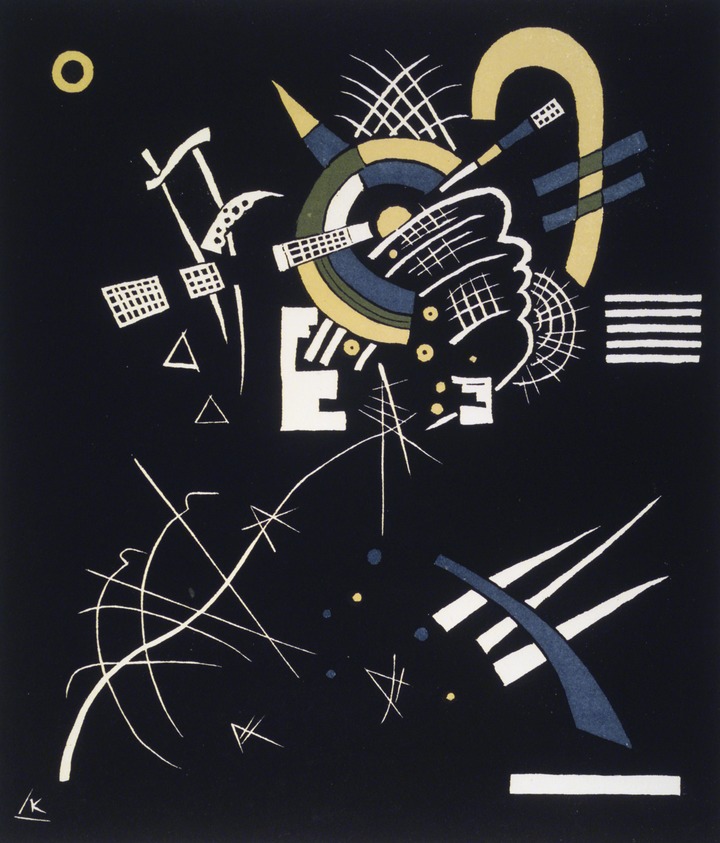
Vasily Kandinsky (Russian, 1866–1944). Small Worlds VII, 1922. Color lithograph on wove paper, 10 5/8 x 9 3/16 in. (27 x 23.3 cm). Brooklyn Museum, Gift of Stephen Currier, 58.108.11. © 2019 Artists Rights Society (ARS), New York
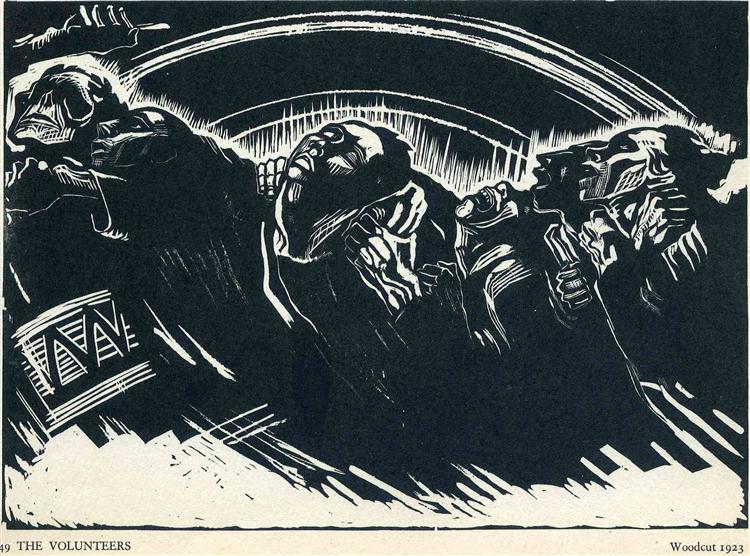
Käthe Kollwitz (German, 1867–1945). The Volunteers, 1922–23. Woodcut on wove paper, Image: 13 3/4 x 19 9/16 in. (34.9 x 49.7 cm), Sheet: 19 × 25 3/4 in. (48.3 × 65.4 cm). Brooklyn Museum, Carll H.de Silver Fund, 44.201.2. © 2019 Artists Rights Society (ARS),New York
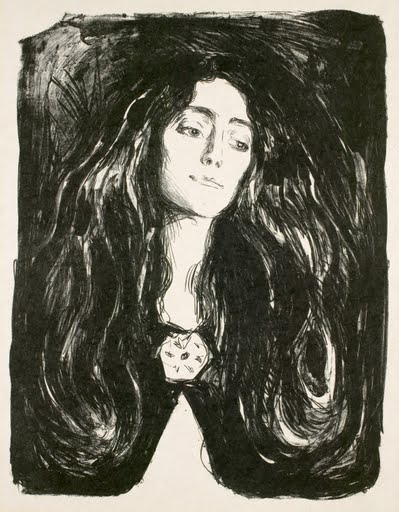 Edvard Munch (Norwegian, 1863–1944). Eva Mudocci, 1903.
Edvard Munch (Norwegian, 1863–1944). Eva Mudocci, 1903.
Lithograph on wove paper, 23 5/16 × 18 3/8 in. (59.3 × 46.7 cm). Brooklyn Museum, Charles Stewart Smith Memorial Fund, 38.253.
© 2019 Artists Rights Society (ARS), New York

Édouard Vuillard (French, 1868–1940). The Avenue, 1899. Color lithograph on laid paper, 12 3/8 × 16 3/8 in. (31.4 × 41.6 cm). Brooklyn Museum, by exchange, 37.149.3. © 2019 Artists Rights Society (ARS), New York

Henri Matisse (French, 1869–1954). The Odalisque, 1924. Lithograph on loose China paper, 14 3/8 x 10 3/8 in. (36.5 x 26.4 cm). Brooklyn Museum, Museum Collection Fund, 25.123. © 2019 Succession H. Matisse / Artists Rights Society (ARS), New York
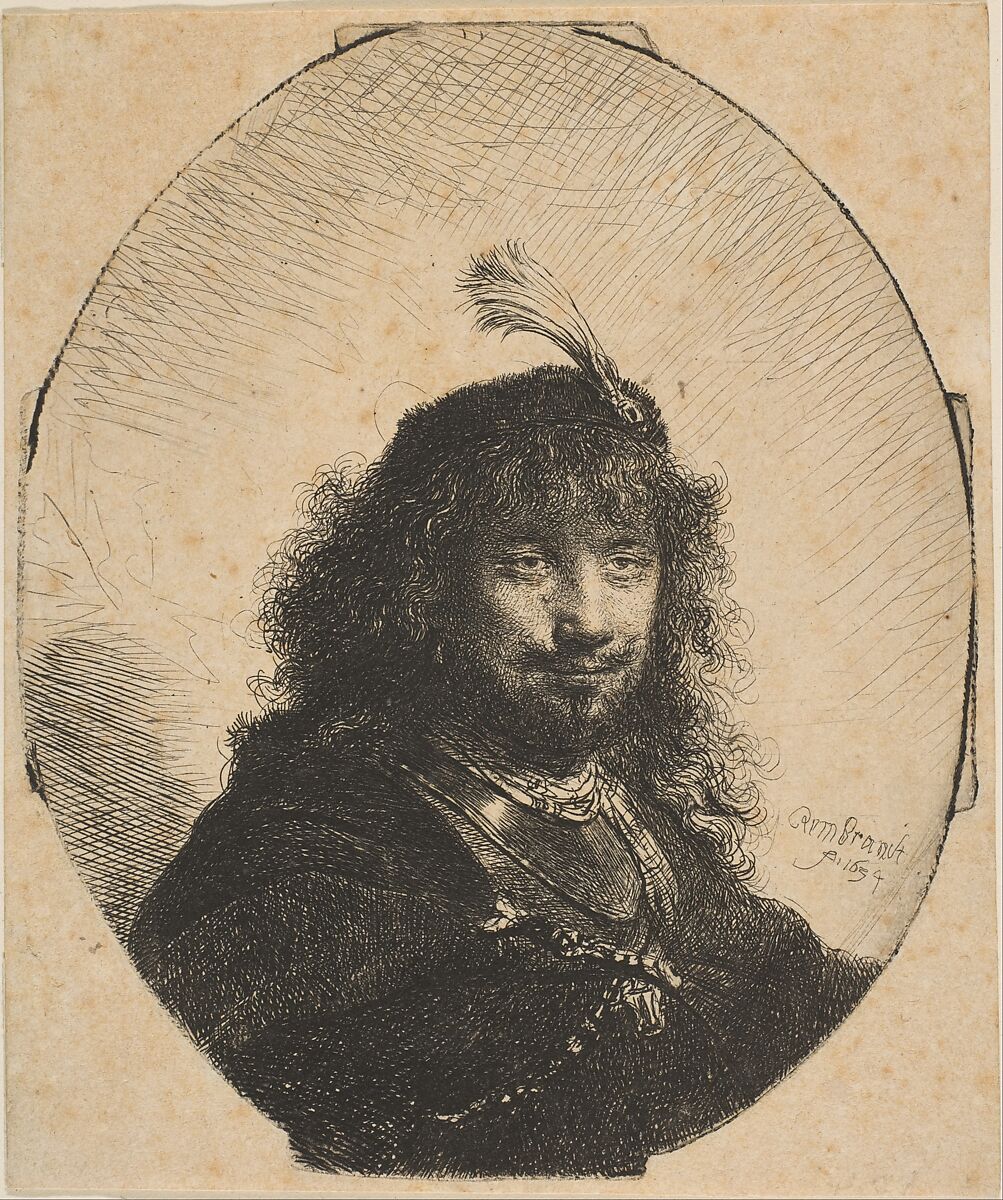
Rembrandt van Rijn (Dutch, 1606–1669). Rembrandt with Plumed Cap and Lowered Sabre, 1634. Etching on laid paper, 5 1/4 x 4 1/4 in. (13.3 x 10.8 cm). Brooklyn Museum, Gift of Mrs. Charles Pratt, 57.188.48
 .
.
Rembrandt van Rijn (Dutch, 1606–1669). Clump of Trees with a Vista, 1652. Drypoint on laid paper, 5 x 8 3/8 in. (12.7 x 21.3 cm). Brooklyn Museum, Gift of Mrs. Horace O. Havemeyer, 54.35.11

Vincent van Gogh (Dutch, 1853–1890). Cypresses, June 1889. Reed pen, graphite, quill, and brown and black ink on wove Latune et Cie Balcons paper, 24 3/8 x 18 5/8 in. (61.9 x 47.3 cm). Brooklyn Museum, Frank L. Babbott Fund and A. Augustus Healy Fund, 38.123

Édouard Manet (French, 1832–1883). The Equestrienne (L’amazone), circa 1875–76. Watercolor and graphite on tan wove paper, 8 3/16 x 10 5/8 in. (20.8 x 27 cm). Brooklyn Museum, Gift of Frank L. Babbott, 23.45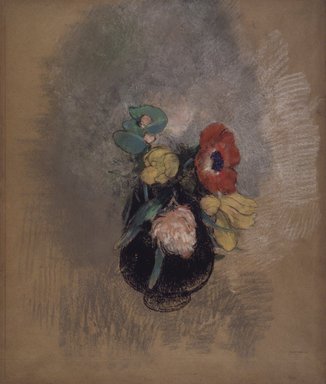
Odilon Redon (French, 1840–1916). Anemones and Tulips, 1902–3. Pastel on tan paper, 21 9/16 x 18 1/4 in. (54.8 x 46.4 cm). Brooklyn Museum, Gift of Mrs. Horace O. Havemeyer, 42.198.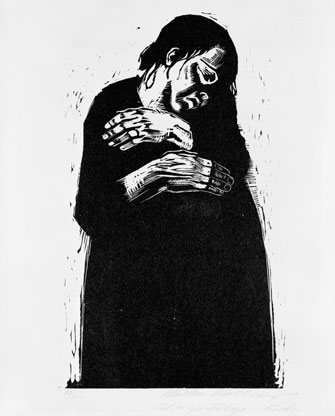
Käthe Kollwitz (German, 1867–1945). The Widow I, 1922–23. Woodcut on wove paper, 18 3/4 × 14 9/16 in. (47.6 × 37 cm). Brooklyn Museum, Carll l H. de Silver Fund, 44.201.4. © 2019 Artists Rights Society (ARS), New York
Cleared for press; must be
 Pablo Picasso (Spanish, 1881–1973). Head of a Young Man (Tête de jeune homme), 1923. Grease crayon on pink Michallet laid paper, 24 ½ x 18 ⅝ in. (62.2 x 47.3 cm). Brooklyn Museum, Carll H. de Silver Fund, 39.18. © 2018 Estate of Pablo Picasso / Artists Rights Society (ARS), New York
Pablo Picasso (Spanish, 1881–1973). Head of a Young Man (Tête de jeune homme), 1923. Grease crayon on pink Michallet laid paper, 24 ½ x 18 ⅝ in. (62.2 x 47.3 cm). Brooklyn Museum, Carll H. de Silver Fund, 39.18. © 2018 Estate of Pablo Picasso / Artists Rights Society (ARS), New York  Pablo Picasso, (Spanish, 1881–1973). Nude Standing in Profile (Nu debout en profil), 1906. Charcoal on laid paper, 21 1/8 x 14 1/4 in. (53.7 x 36.2 cm). Brooklyn Museum, Gift of Arthur Wiesenberger, 43.178. © 2019 Estate of Pablo Picasso / Artists Rights Society (ARS), New York
Pablo Picasso, (Spanish, 1881–1973). Nude Standing in Profile (Nu debout en profil), 1906. Charcoal on laid paper, 21 1/8 x 14 1/4 in. (53.7 x 36.2 cm). Brooklyn Museum, Gift of Arthur Wiesenberger, 43.178. © 2019 Estate of Pablo Picasso / Artists Rights Society (ARS), New York  Max Beckmann (German, 1884–1950). Self-Portrait in Bowler Hat, 1921. Drypoint on laid paper, 12 1/2 x 9 7/16 in. (31.8 x 24 cm).
Max Beckmann (German, 1884–1950). Self-Portrait in Bowler Hat, 1921. Drypoint on laid paper, 12 1/2 x 9 7/16 in. (31.8 x 24 cm).  Pierre Bonnard (French, 1867–1947). The Little Laundry Girl, 1895–96. Color lithograph on wove paper, 11 7/16 x 7 7/8 in. (29.1 x 20 cm). Brooklyn Museum, by exchange, 38.444. © 2019 Artists Rights Society (ARS), New York
Pierre Bonnard (French, 1867–1947). The Little Laundry Girl, 1895–96. Color lithograph on wove paper, 11 7/16 x 7 7/8 in. (29.1 x 20 cm). Brooklyn Museum, by exchange, 38.444. © 2019 Artists Rights Society (ARS), New York
Georges Braque (French, 1882–1963). Fox, 1911. Etching and drypoint on Arches laid paper, Image: 21 1/2 x 14 7/8 in. (54.6 x 37.8 cm). Brooklyn Museum, A. Augustus Healy Fund, 36.59. © 2019 Artists Rights Society (ARS), New York / ADAGP, Paris

Otto Dix (German, 1891–1969). Card Players, 1920. Drypoint on wove paper, 12 7/8 × 11 1/8 in. (32.7 × 28.3 cm). Brooklyn Museum, Gift of Dr. F. H. Hirschland, 55.165.66. © 2019 Artists Rights Society (ARS), New York / VG Bild-Kunst,
 James Ensor (Belgian, 1860–1949). Salon des Cent, 1898. Color lithograph on wove paper, Image: 22 1/4 × 14 1/2 in. (56.5 × 36.8 cm). Brooklyn Museum, by exchange, 38.432.
James Ensor (Belgian, 1860–1949). Salon des Cent, 1898. Color lithograph on wove paper, Image: 22 1/4 × 14 1/2 in. (56.5 × 36.8 cm). Brooklyn Museum, by exchange, 38.432.
Vasily Kandinsky (Russian, 1866–1944). Small Worlds VII, 1922. Color lithograph on wove paper, 10 5/8 x 9 3/16 in. (27 x 23.3 cm). Brooklyn Museum, Gift of Stephen Currier, 58.108.11. © 2019 Artists Rights Society (ARS), New York

Käthe Kollwitz (German, 1867–1945). The Volunteers, 1922–23. Woodcut on wove paper, Image: 13 3/4 x 19 9/16 in. (34.9 x 49.7 cm), Sheet: 19 × 25 3/4 in. (48.3 × 65.4 cm). Brooklyn Museum, Carll H.de Silver Fund, 44.201.2. © 2019 Artists Rights Society (ARS),New York
Lithograph on wove paper, 23 5/16 × 18 3/8 in. (59.3 × 46.7 cm). Brooklyn Museum, Charles Stewart Smith Memorial Fund, 38.253.
© 2019 Artists Rights Society (ARS), New York

Édouard Vuillard (French, 1868–1940). The Avenue, 1899. Color lithograph on laid paper, 12 3/8 × 16 3/8 in. (31.4 × 41.6 cm). Brooklyn Museum, by exchange, 37.149.3. © 2019 Artists Rights Society (ARS), New York

Henri Matisse (French, 1869–1954). The Odalisque, 1924. Lithograph on loose China paper, 14 3/8 x 10 3/8 in. (36.5 x 26.4 cm). Brooklyn Museum, Museum Collection Fund, 25.123. © 2019 Succession H. Matisse / Artists Rights Society (ARS), New York
Rembrandt van Rijn (Dutch, 1606–1669). Rembrandt with Plumed Cap and Lowered Sabre, 1634. Etching on laid paper, 5 1/4 x 4 1/4 in. (13.3 x 10.8 cm). Brooklyn Museum, Gift of Mrs. Charles Pratt, 57.188.48
Rembrandt van Rijn (Dutch, 1606–1669). Clump of Trees with a Vista, 1652. Drypoint on laid paper, 5 x 8 3/8 in. (12.7 x 21.3 cm). Brooklyn Museum, Gift of Mrs. Horace O. Havemeyer, 54.35.11

Vincent van Gogh (Dutch, 1853–1890). Cypresses, June 1889. Reed pen, graphite, quill, and brown and black ink on wove Latune et Cie Balcons paper, 24 3/8 x 18 5/8 in. (61.9 x 47.3 cm). Brooklyn Museum, Frank L. Babbott Fund and A. Augustus Healy Fund, 38.123

Édouard Manet (French, 1832–1883). The Equestrienne (L’amazone), circa 1875–76. Watercolor and graphite on tan wove paper, 8 3/16 x 10 5/8 in. (20.8 x 27 cm). Brooklyn Museum, Gift of Frank L. Babbott, 23.45

Odilon Redon (French, 1840–1916). Anemones and Tulips, 1902–3. Pastel on tan paper, 21 9/16 x 18 1/4 in. (54.8 x 46.4 cm). Brooklyn Museum, Gift of Mrs. Horace O. Havemeyer, 42.198.

Käthe Kollwitz (German, 1867–1945). The Widow I, 1922–23. Woodcut on wove paper, 18 3/4 × 14 9/16 in. (47.6 × 37 cm). Brooklyn Museum, Carll l H. de Silver Fund, 44.201.4. © 2019 Artists Rights Society (ARS), New York
Cleared for press; must be
